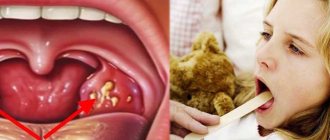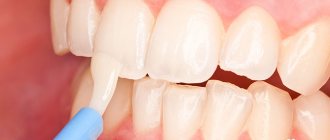– substances of natural or semi-synthetic origin that inhibit the growth of microorganisms or cause their death.
Antibiotics only affect microorganisms. Their effect does not apply to viruses or fungi. Therefore, it is advisable to use antibiotics for diseases caused by microbes. In case of viral diseases (hepatitis, influenza, etc.), their use makes no sense and can even cause harm due to side effects.
Depending on the chemical structure, antibiotics are divided into groups , for example, fluoroquinolones, penicillins, tetracyclines, macrolides, cephalosporins, etc.
Each group may contain antibiotics of different generations (for example, in the fluoroquinolone group, ciprofloxacin belongs to the first generation, levofloxacin to the second, and moxifloxacin to the third).
Basic principles of antibacterial therapy
There are certain requirements for prescribing antibiotics.
The antibiotic prescribed by the doctor must penetrate well into the tissues where there is a purulent-inflammatory process. For example, lincomycin penetrates well into bone tissue and is used for osteomyelitis, amoxiclav - into soft tissues, and can be used in the treatment of boils and erysipelas.
The antibiotic must have an inhibitory effect on the microorganism that caused the inflammation. For example, it makes no sense to use Tsifran for anaerobic infections (caused by anaerobic microorganisms), because Tsifran has no effect on them. In such a situation, Avelox is indicated - an antibiotic that acts incl. and anaerobic microorganisms.
To determine the sensitivity of the microorganism to antibiotics, a culture is taken from the wound. The difficulty is that the doctor usually receives the culture result in about 5–8 days, and an antibiotic must be prescribed immediately upon detection of microbial inflammation. In such a situation, empirical antibiotic therapy is used, the meaning of which is to prescribe an antibiotic that suppresses the most likely causative agent of the infection. For example, for a boil or carbuncle, antibiotics are prescribed that suppress Staphylococcus aureus, because It is this microorganism that most often causes suppuration in boils and carbuncles. Then, when the culture result comes, you can change the antibiotic to the one to which the microbe is sensitive in this particular case (if this is still necessary).
Antibiotics should be used to minimize the risk of side effects and complications in a given patient. For example, fluoroquinolones should not be prescribed to patients with epilepsy; aminoglycosides are not suitable for patients with hearing loss.
Antibiotics of the 21st century
In the first part of the article, we talked about the main myths associated with antibiotics and described in detail the penicillin group, and now let’s move on to the next generation of antibiotics.
CEPHALOSPORINS
Microbes often act, if not wisely, then quite logically.
If they are threatened by penicillin antibiotics, the microbes begin to destroy penicillins (if only we could do this - something is bothering us, but we do it! - and wipe them off the face of the earth).
The weak link of penicillins is the so-called beta-lactam ring (you will often see this term in the description of drugs, so it is better to remember it). It is this beta-lactam ring that microbes have learned to break. And the tool for breaking is special enzymes, beta-lactamases.
So, in short, antibiotics of the cephalosporin group are the same penicillins, which work in exactly the same way, but they are not afraid of beta-lactamases. This means that they can deal with microbes that the same ampicillin or even amoxicillin with clavulanic acid cannot cope with.
The “arms race” between microbes and pharmacists over time gave rise to the second, third, and then fourth generations of cephalosporin antibiotics (when pronouncing some of the names of these drugs, even doctors are scared, immediately imagining what flora these antibiotics are intended against).
WHEN DOCTORS PRESCRIBE CEPHALOSPORINS
If you are allergic to regular penicillins.
Of course, the chemical structure of penicillins and cephalosporins is similar, but the chance that the patient will not have an allergic reaction to cephalosporins is still very high; If penicillin antibiotics do not treat the infection. This often happens if a patient becomes infected with some kind of staphylococcus or streptococcus already in the hospital: the microbes there are already poisoned by anything, and therefore are especially resistant to tablets from a regular pharmacy.
Microbes, unfortunately, learn quickly and evolve quickly. This is understandable: they only need 20 minutes to change generations.
And yet, doctors always recommend starting treatment with antibiotics from the penicillin group, so as not to breed antibiotic-resistant flora.
ANTIBIOTICS OF THE MACROLIDE GROUP
Penicillin revolutionized the treatment of infections. But very soon it turned out that he was capable of killing too. Here and there, patients began to die from anaphylactic shock caused by penicillin (remember - there are allergic reactions to penicillin?).
What could the scientists do? Just develop new antibiotics.
Penicillin began to be widely used in 1943 (in the USA and USSR, and almost simultaneously). And already in 1949, Alberto Aguilar in the Philippines discovered a new (after the green mold from which penicillin was isolated) special fungus that suppresses the growth of bacteria.
In the USA, a year later, another scientist, McGuire, isolated a new antibiotic from it - erythromycin (for some reason Wikipedia persistently writes that Eli Lilly isolated it, but this is not so - McGuire simply worked for him).
Erythromycin still works: it turned out that bacteria can adapt to it much less well than to penicillin.
WHAT CAN MACROLIDES DO?
Firstly, bacteria actually adapt to macrolides much more slowly than to penicillins.
But they also adapt. That is why erythromycin has now grown into a huge family of “younger brothers” - semisynthetic macrolides and azalides, which some pharmacists classify into another separate group - the fourth and last group of antibiotics used in pediatrics.
Secondly, macrolides do not kill bacteria - they deprive them of the ability to reproduce, as a result of which bacterial cells, without causing harm to humans, very quickly die by natural causes or become victims of the immune system.
Thirdly, macrolides can penetrate inside cells and overtake the bacteria that love to settle there - chlamydia and mycoplasma.
Chlamydia and mycoplasma do not have a cell wall, due to which they are invulnerable to penicillins (penicillins kill only bacteria that have a cell wall. If there is no cell wall, the task is to strangle Kolobok - it seems that you need it by the neck, but it simply isn’t there). But for macrolides, the absence of a cell wall is not an obstacle: chlamydia and mycoplasmas die upon contact with macrolides, although not so quickly.
WHEN DO DOCTORS PRESCRIBE MACROLIDES?
- the patient is allergic to penicillins;
Routes of administration of antibiotics
- oral (by mouth), intramuscular and intravenous - should also be taken into account in outpatient practice. Thus, for patients receiving treatment at home, it is not advisable to prescribe antibiotics that require three intramuscular injections (for example, cefazolin), because such a patient will have to go to the treatment room three times a day.
Only a doctor should prescribe an antibiotic , because the use of antibiotics without indications or when there are contraindications can cause side effects and complications, and ultimately cause harm rather than benefit.
Principles for choosing antimicrobial drugs
Self-medication with antibiotics is strictly prohibited, since uncontrolled use of potent drugs can weaken the body and worsen the body's defense reactions. The drugs are selected exclusively by the doctor, taking into account the form of the disease and the patient’s condition.
Indications for prescribing antibiotics for the treatment of infectious diseases are the following:
- Development of bacterial microflora in the respiratory tract. This is indicated by sputum with a green or yellow tint, which comes out with a cough.
- Maintaining body temperature above 38.5°C for more than 4 days.
- Severe weakness and the appearance of severe fatigue with minimal exertion.
- The presence of purulent mucus in the stool.
Before a certain type of antibiotic is prescribed, a bacteriological culture must be carried out. To do this, take a swab from the nasopharynx and trachea, as well as mucus from the stool. Samples are placed in a nutrient medium to determine the type of microorganism. After this, a group of antibiotics is selected that destroy certain bacteria.
To ensure that the chosen antibiotic does not provoke a deterioration in the general condition, the following general tests are performed:
- Blood. During the test, the number of main components is determined. When using antimicrobial drugs, a decrease in their levels may occur, so it is important to exclude the possibility of critical indicators.
- Urine. Testing allows you to determine the condition of the urinary system and prevent possible inflammatory processes due to increased stress on the organs when removing the antibiotic from the body.
Also carried out:
- Biochemical blood test to exclude exacerbations of existing pathologies when using potent antimicrobial drugs.
- CT scan of the chest to assess the extent of damage to the lung tissue and select the dosage of the antibiotic.
Pharmacodynamics of antibiotics
Antibiotics, which are classified as tetracyclines, kill the ability of the pathogen to multiply. They are effective against the following flora:
- gonococci
- streptococci
- staphylococci
- enterobacteria
- pertussis stick
- salmonella
- klebsiella
- spirochetes
- mycoplasma
- chlamydia
Antibacterial drugs from the fluoroquinol group suppress DNA gyrase and topoisomerase, disrupt DNA synthesis, and through these mechanisms they help cope with the disease. If the pathogen is resistant to 1st generation quinolines (which is revealed during therapy), then the doctor prescribes one of the fluoroquinolones. Drugs of this group kill mycobacteria, mycoplasma and pneumococci, but of the 3rd and 4th generation, and the 2nd generation is less effective. Some enterococci can also be destroyed by fluoroquinolones.
Antibiotics in the treatment of tonsillar pathology
A.I. KRYUKOV, Doctor of Medical Sciences, Professor, N.L. KUNELSKAYA
, Doctor of Medical Sciences, Professor,
G.Yu.
TSARAPKIN , Doctor of Medical Sciences,
A.S.
TOVMASYAN , Ph.D.,
O.A.
KISELEV ,
Research Clinical Institute of Otorhinolaryngology named after.
L.I. Sverzhevsky Department of Health, Moscow Tonsillar pathology is one of the most common pathologies throughout the world. People of all ages are susceptible to it, but inflammatory diseases of the tonsils are most relevant in childhood due to the risk of severe complications. Algorithms for the treatment of tonsillar pathology are described in various international and national guidelines, however, the practical choice of antimicrobial agents often causes difficulties for practitioners.
Up to 80% of acute and exacerbations of chronic respiratory diseases are accompanied by the symptom of sore throat, which is one of the most common reasons for patients to visit a pediatrician, therapist, otolaryngologist and doctors of other specialties. Acute inflammation of the pharynx is the cause of 1.1% of the total number of patient visits to doctors; 6% of all visits to the pediatrician; acute tonsillopharyngitis is among the 20 most frequently diagnosed diseases [1, 2]. In this case, sore throat can be a dominant problem, inevitably affecting the patient’s quality of life [3]. The relevance of the tonsillar problem is determined not only by the high prevalence of the disease, but also by the significant risk of developing associated systemic diseases, such as acute rheumatic fever, bacterial endocarditis, glomerulonephritis, toxic shock, etc.
In domestic practice, in case of acute infection involving the tonsils, the term “tonsillitis” or “tonsillitis” is usually used, and inflammation of the lymphoid follicles of the posterior pharyngeal wall is usually characterized by the term “pharyngitis”. In clinical practice, a combination of tonsillitis and pharyngitis is often observed, especially in childhood, therefore in the literature, especially in English, the term “tonsillopharyngitis” is widely used, suggesting inflammation of the walls of the oropharynx. In particular, the development of bacterial tonsillitis is often caused by an infection caused by beta-hemolytic streptococcus group A (GABHS), pharyngitis is usually caused by respiratory viruses, adenoiditis by viruses, Streptococcus pneumoniae, Haemophilus influenzae, Staphylococcus aureus, Moraxella catarrhalis
, epiglottitis -
H. influenzae
.
Acute tonsillitis is classified into primary (banal) tonsillitis (catarrhal, follicular, lacunar, mixed, phlegmonous), secondary, arising from infectious diseases (scarlet fever, measles, diphtheria, syphilis, etc.), from blood diseases (leukemia, agranulocytosis, monocytosis), atypical (Simanovsky - Plaut - Vincent, viral, fungal). In clinical practice, the most common epidemic form of the disease is when the infection is transmitted by airborne droplets or contact and causes primary sore throats. In childhood, up to 30% of sore throats are bacterial in nature; in the vast majority of cases, the etiological factor is GABHS. Much more often, the development of acute tonsillitis is caused by a viral infection, primarily adenoviruses, respiratory syncytial viruses, and the Epstein-Barr virus. Viral forms of acute tonsillitis predominantly occur in the autumn-winter period and predominate in children of the first 3 years of life (up to 90%), and over the age of 5 years the frequency of bacterial forms increases (up to 50%) [4]. Intracellular pathogens also play a significant role in the development of the disease in childhood - Mycoplasma pneumoniae, Chlamydia pneumoniae, which are inoculated in 10-24 and 5-21% of cases, respectively, and the entire pharyngeal epithelium is infected with chlamydia, which may cause the process to become chronic [5, 6 ].
It is believed that the development of sore throat occurs as a hyperergic allergic reaction, and the sensitization of the body is caused by a variety of microflora of tonsil lacunae and protein breakdown products, and the trigger for the development of the disease can be various factors of an exogenous or endogenous nature. An allergic factor can serve as a prerequisite for the occurrence of infectious and allergic diseases, such as rheumatism, glomerulonephritis, nonspecific infectious polyarthritis, which are quite often a complication of tonsillitis, especially induced by GABHS, since they have a high adhesive ability to the membranes of the mucous membranes, resistance to phagocytosis, emit numerous exotoxins that cause a strong immune response contain antigens that cross-react with the myocardium, and the immune complexes that include them are involved in kidney damage [7, 8].
Treatment of acute tonsillitis and pharyngitis is complex and includes irrigation therapy, the use of local antibacterial drugs and systemic antibiotics.
With the viral etiology of tonsillitis and pharyngitis, it is possible to limit oneself to the prescription of irrigation therapy and local antiseptics, however, the bacterial etiology of the disease, especially GABHS, requires the mandatory use of systemic antibiotics.
In this regard, it is extremely important to follow the principles of rational antibacterial therapy, namely: prescribing the drug with the aim of maximizing clinical and bacteriological recovery; the spectrum of action of the drug must correspond to the probable causative agent of the infection, overcome possible resistance mechanisms and create a maximum concentration at the site of infection. What is especially important in pediatric practice is that the prescribed drug should be easy to use.
Adequate interpretation of the leading etiological factor (bacteria, viruses, fungi, protozoa), the clinical form of tonsillitis (primary or secondary), the severity of the disease (in acute tonsillitis there is usually one pathogen, in exacerbation of chronic tonsillitis - a mixed flora) [9] make it possible to prescribe therapy empirically, with taking into account information about sensitivity to antibiotics, the ability of the drug to create adequate concentrations at the site of infection and the proven effectiveness and safety of its use.
Traditionally, the drugs of choice for GABHS tonsillitis are semi-synthetic broad-spectrum penicillins. They are effective against the most likely pathogens of tonsillitis (GABHS), belong to a safe group of antibiotics, and all have oral forms. With a typical picture of the disease, they are considered as the drugs of choice.
The most famous representative of this group is amoxicillin, which has a pronounced bactericidal effect. The mechanism of action of the drug is associated with inhibition of the synthesis of peptidoglycan (a substance that is the basis of the bacterial membrane), which leads to disruption of the integrity of bacterial cell membranes and their death. Amoxicillin is active against strains of Staphylococcus spp. and Streptococcus spp.
., as well as
Neisseria meningitidis, Neisseria gonorrhoeae, Escherichia coli, Salmonella spp., Shigella spp., Klebsiella spp.
Therapeutic concentrations of amoxicillin are maintained in plasma for 8 hours after oral administration. Amoxicillin is rapidly absorbed from the digestive tract and reaches peak plasma concentrations within 1-2 hours after administration. Food intake has virtually no effect on the bioavailability and rate of absorption of amoxicillin. The active component is stable in the acidic environment of the stomach. High concentrations of the active substance are created in bronchial secretions, sputum, blood plasma, peritoneal and pleural fluid, as well as in lung tissue. Concentrations of amoxicillin in tissues and biological fluids are proportional to the dose taken.
During the metabolism of amoxicillin, pharmacologically inactive substances are formed. About 50-70% of the dose taken is excreted unchanged by the kidneys, about 10-20% by the liver, the rest of amoxicillin is excreted in the form of metabolites. Amoxicillin produced in Russia, Amosin (JSC Sintez, Kurgan), is currently available. The drug is intended for oral use. Capsules are taken before or after meals at regular intervals. As a rule, adults and children over 10 years of age (with a body weight of more than 40 kg) are prescribed 500 mg of amoxicillin three times a day. In severe cases of the disease, the dose of amoxicillin is increased to 750-1,000 mg three times a day. For children from 5 to 10 years of age, the therapeutic dose is 250 mg of amoxicillin three times a day. The average course of therapy lasts from 5 to 12 days (as a rule, therapy is continued for 2-3 days after the disappearance of clinical manifestations of the disease).
However, it should be taken into account that H. influenzae
, as well as
M. catarrhalis
are active producers of β-lactamases. This dictates the need to use protected aminopenicillins as initial therapy drugs, which are rightfully considered the “gold standard” for the treatment of acute purulent-inflammatory pathology of the ENT organs. One of the most commonly used antibiotics in the treatment of tonsillar pathology is a combination drug containing semisynthetic penicillin - amoxicillin and an irreversible lactamase inhibitor - clavulanic acid. Amoxicillin clavulanate is represented on the market by a number of trade names, among which the Russian drug Arlet® can be distinguished. Clavulanic acid, due to the presence of a β-lactam ring in its structure, forms stable complexes with bacterial lactamases and protects amoxicillin from destruction by these enzymes. This combination of components ensures high bactericidal activity of the drug. Arlet® is active against both amoxicillin-sensitive microorganisms and strains producing β-lactamases:
• gram-positive aerobes: Streptococcus pneumoniae
, GABHS,
Staphylococcus aureus
(except methicillin-resistant strains),
S. epidermidis
(except methicillin-resistant strains),
Listeria spp., Enteroccocus spp.;
• gram-negative aerobes:
Bordetella pertussis, Brucella spp., Campylobacter jejuni, Escherichia coli, Gardnerella vaginalis, Haemophilus influenzae, H. ducreyi, Klebsiella spp., Moraxella catarrhalis, Neisseria gonorrhoeae, N. meningitidis, Pasteurela multocida, Proteus spp., Salmonella spp. ., Shigella spp., Vibrio cholerae, Yersinia enterocolitica
;
• anaerobes: Peptococcus spp., Peptostreptococcus spp., Clostridium spp., Bacteroides spp., Actinomyces israelii
.
The pharmacokinetics of amoxicillin and clavulanic acid have many similarities. Both components are well absorbed from the gastrointestinal tract; food intake does not affect the degree of their absorption. Peak plasma concentrations are reached approximately one hour after taking the drug. Amoxicillin and clavulanic acid are characterized by good distribution in body fluids and tissues, creating therapeutic concentrations in areas of upper respiratory tract infections (tonsils, pharyngeal mucosa, paranasal sinuses, tympanic cavity, etc.). Amoxicillin is excreted unchanged from the body by the kidneys through tubular secretion and glomerular filtration. Clavulanic acid is eliminated through glomerular filtration, partially in the form of metabolites. Small amounts may be excreted through the intestines and lungs. The half-life is 1–1.5 hours. In patients with severe renal failure, the half-life of amoxicillin increases to 7.5 hours, clavulanic acid - to 4.5.
Amoxicillin/clavulanate is well tolerated. Adverse events are relatively rare and include diarrhea, nausea and skin rash. Arlet® tablets should be taken orally, without chewing, during meals, with a small amount of water. For adults and children over 12 years of age (or with a body weight of more than 40 kg), the usual dose for mild to moderate infections is 1 tablet of 250/125 mg 3 times a day. For severe infections, a tablet of 500/125 mg is prescribed 3 times a day; if necessary, tablets of the drug Arlet® are prescribed at a dose of 875/125 mg or 1 tablet of 500/125 mg 3 times a day. The course of treatment lasts up to 5-14 days. The duration of treatment is determined by the attending physician. Treatment should not continue for more than 14 days without repeated medical examination.
For atypical manifestations of the disease (mycoplasma and chlamydophilic infections), macrolides are the drugs of choice. They are recommended for use in children as initial therapy in the treatment of atypical forms of tonsillitis, as well as in cases where there is intolerance to beta-lactam antibiotics. Macrolides are considered as alternative antibacterial agents that can be prescribed in the event of a lack of effect from initial therapy, with the development of side and undesirable events associated with the use of first-line drugs [10, 11].
Literature
1. Nash DR, Harman J, Wald ER, Kelleher KJ. Antibiotic prescribing by primary care physicians for children with upper respiratory tract infections. Arch Pediatr Adolesc Med 2002. 156. 11: 1114-1119. 2. Panasiuk L, Lukas W, Paprzycki P. Empirical first-line antibioticotherapy in adult rural patients with acute respiratory tract infections. Ann Agric Environ Med 2007. 14. 2: 305-311. 3. Babiyak V.I., Govorukhin M.I., Mitrofanov V.V. Some psychological aspects of the problem of human “quality of life”. Russian Otorhinol., 2004. 1(8): 3-6. 4. Tatochenko V.K., Bakradze M.D., Darmanyan A.S. Acute tonsillitis in childhood: diagnosis and treatment. Farmateka, 2009. 14: 65-69. 5. Garashchenko T.I., Strachunsky L.S. Antibacterial therapy of ENT diseases in childhood. In the book: Pediatric otorhinolaryngology: A guide for doctors. Ed. M.R. Bogomilsky, V.R. Chistyakova. T. II. M.: Medicine, 2005: 275-317. 6. Linkov V.I., Tsurikova G.P., Nuralova I.V., Pankina N.A. The significance of chlamydial infection in the development of chronic inflammatory diseases of the pharynx. News of otolaryngology and speech pathology, 1995. 3(4): 146-146. 7. Kryukov A.I. Clinic, diagnosis and treatment of tonsillar pathology (Manual for doctors). M., 2011. 32 p. 8. Luchikhin L.A. Angina. Otorhinolaryngology: national guidelines. Ed. V.T. Palchuna. M.: GEOTAR-Media, 2008: 652–673. 9. Garashchenko T.I. Macrolides in the treatment of acute tonsillitis and its complications in children. RMJ, 2001. 9., 19: 812-816.
Source
: Medical Council, No. 11, 2015
The mechanism of development of diarrhea after a course of antibiotics
Antibiotic-associated diarrhea (AAD) develops as a result of the death of both pathogenic bacteria and beneficial microorganisms. An imbalance of microflora is called dysbiosis. According to statistics, the source of such digestive disorders can be up to ⅕ of the types of antibiotics used in medical practice. Typically, this phenomenon occurs as a result of taking broad-spectrum drugs.
Typically, this type of diarrhea does not have other symptoms, unlike food poisoning. The main symptoms of antibiotic poisoning include watery or loose stools, and less commonly, cramping abdominal pain. Most often, the intestinal condition returns to normal after 2-3 days.
In very rare cases, antibacterial therapy can cause colonization of the mucous membranes by pathogenic microorganisms - Clostridium difficile and Salmonella. They cause severe infections with persistent diarrhea, which increases the risk of dehydration and can lead to serious health consequences.
Antibiotic-associated diarrhea can occur with long-term use of suitable doses of the drug, and not necessarily in tablet form - injections can also lead to this result. However, poisoning can also occur due to an overdose. Each antibiotic has a toxic effect on different organs, so the category of the drug is taken into account. Common symptoms of overdose include the following:
- high body temperature (up to 39–40 ˚C);
- diarrhea;
- vomit;
- muscle pain;
- pain in the right hypochondrium;
- changes in blood pressure;
- tachycardia or bradycardia;
- joint pain;
- dizziness, etc.
With toxic damage to the liver, the following symptoms may appear: yellowness of the skin and sclera, itching of the skin, bloating, etc. With kidney damage, the volume of urine decreases significantly, and a strong feeling of thirst occurs. Poisoning with aminoglycosides leads to the appearance of signs of toxic otitis: acute pain in the ears, decreased hearing acuity, a feeling of congestion, etc. All conditions associated with an overdose of antibiotics require immediate treatment of poisoning . It is important to call an ambulance as soon as possible.
Antibiotic overdose
If an overdose of tetracyclines occurs, the side effects of the drugs become stronger. Side effects are listed above. Treatment consists of taking medications to relieve symptoms. An overdose of macrolide antibiotics is not life-threatening. Stool disorders, nausea appear, and heart rhythm changes.
Fluoroquinols in excessive dosage do not pose a threat to the patient’s life. Symptoms that arise are treated outside the hospital. Epileptic seizures can occur extremely rarely. An overdose of these drugs affects the joints, liver, cardiovascular system and tendons.
Treatment of inflammation of the appendages during pregnancy
Pregnancy is a contraindication for the use of tetracycline drugs, because these drugs enter the fetus through the placenta and can accumulate in its organs and tissues. Because of this, the unborn child’s skeleton will develop incorrectly. Some macrolides are also not used during pregnancy. Clarithromycin has been proven to be harmful to the fetus. But the effects of roxithromycin and midecamycin have not been sufficiently studied today.
The following drugs are relatively safe for the treatment of inflammation of the appendages of pregnant women:
- spiramycin
- erythromycin
- josamycin
If no other treatment is possible, and inflammation of the appendages in a pregnant woman is severe, doctors may resort to prescribing azithromycin. Drugs from the fluoroquinolone group are prohibited from being used during pregnancy.
Complete blood count and inflammation: when are antibiotics indicated?
A general blood test is undoubtedly the most popular of all existing tests. And for good reason, because its capabilities, among other things, make it possible to detect not only the presence and degree of inflammation, but also to determine its “origin” in relation to the pathogen. This means that the choice in favor of antibacterial or antiviral therapy can be made in the very first days of inflammation, which will not only speed up recovery, but will also significantly reduce the risk of serious complications.
Leukocyte squads
For the “uninitiated” people, a general blood test with a leukocyte formula (1.0.D2.202) most often looks like “Chinese”. To find a “sentence” about the nature of inflammation, which, at first glance, seems completely impossible. Whereas in fact, for a primary clarification of the nature of the infection, a “cursory” assessment of the number of various representatives of leukocytes is often sufficient.
1. Neutrophils
The “instant response group” in the fight against bacteria are neutrophils, the relative (%, in relation to other types of leukocytes) increase in which in a general blood test is a reliable marker of any bacterial inflammation and, accordingly, justification in favor of the antibacterial nature of treatment.
Whereas an absolute increase in the number of neutrophils (cells per liter of blood) often accompanies fairly severe forms of infections.
These representatives of leukocytes are the very first to migrate from the blood to the site of inflammation, where they literally “eat” and “digest” the enemy with the help of “poisonous” granules.
True, after such a “snack”, the neutrophils themselves become unviable and die. And the clinical reflection of this process is the formation of pus at the site of inflammation.
2. Lymphocytes
Simultaneously with the increase in neutrophils, in the blood of a “bacterial” patient there is a relative (%) decrease in the main virus fighters – lymphocytes, which is a reflection of the normal redistribution of “immune assets” for the current tasks of protection. And the process itself is called “relative lymphopenia”.
3. Monocytes
As “liquidators of the consequences” of inflammation, monocytes are “pulled” from the blood into the focus. Which are already “in place” transformed into larger ones - macrophages, and effectively cleanse the “space” of destroyed cells and bacteria.
The maximum increase in monocytes in a general blood test is usually observed only at the very end of inflammation, as a marker of the completion of the process and the beginning of the recovery period.
And, among other things, monocytes are universal “soldiers” and are involved in both bacterial and viral (especially herpetic origin), as well as autoimmune and some other mechanisms of inflammation. Therefore, their increase to one degree or another is characteristic of almost all types of inflammatory process.







